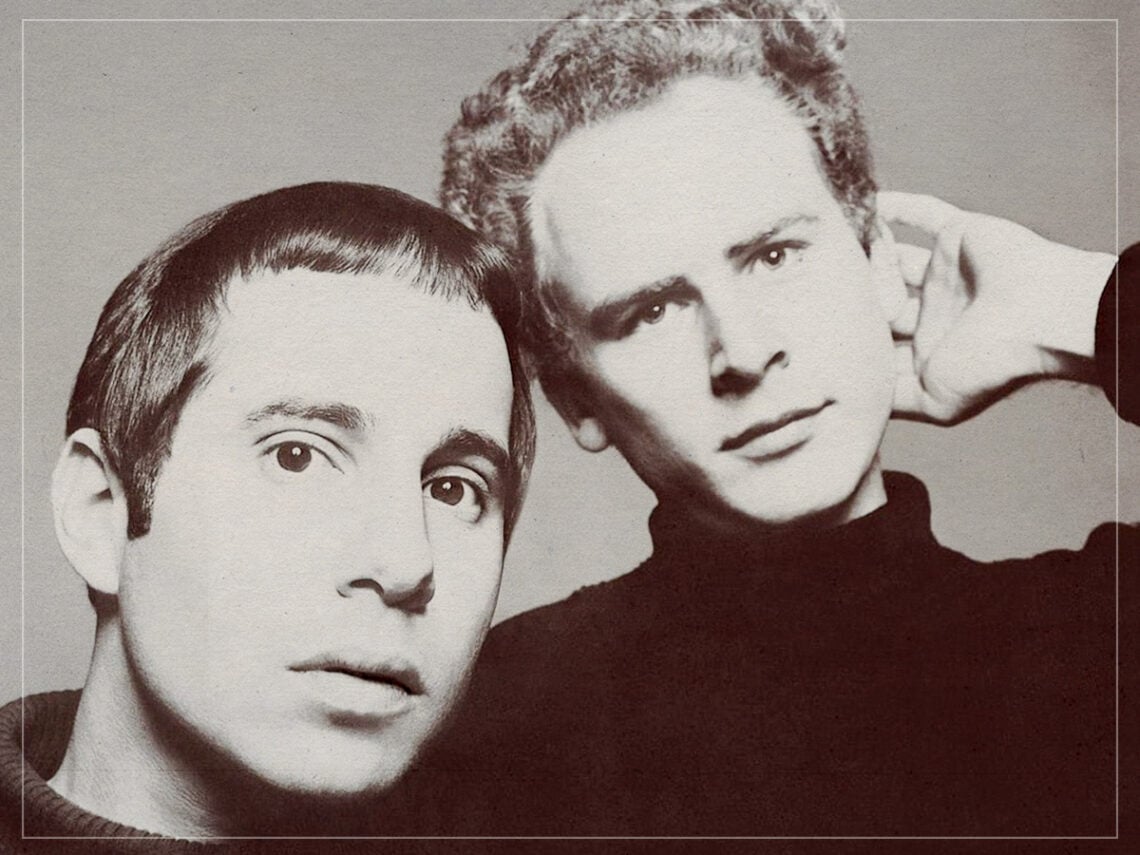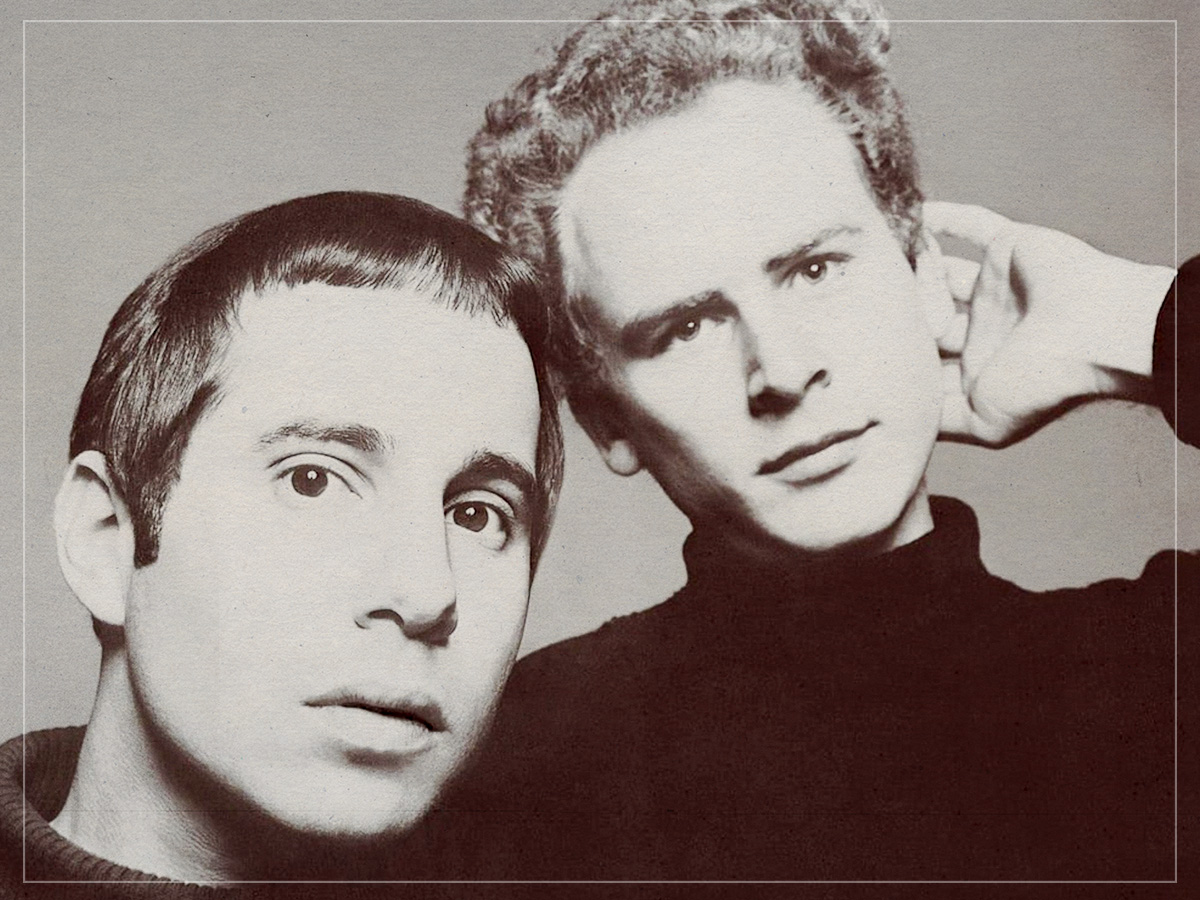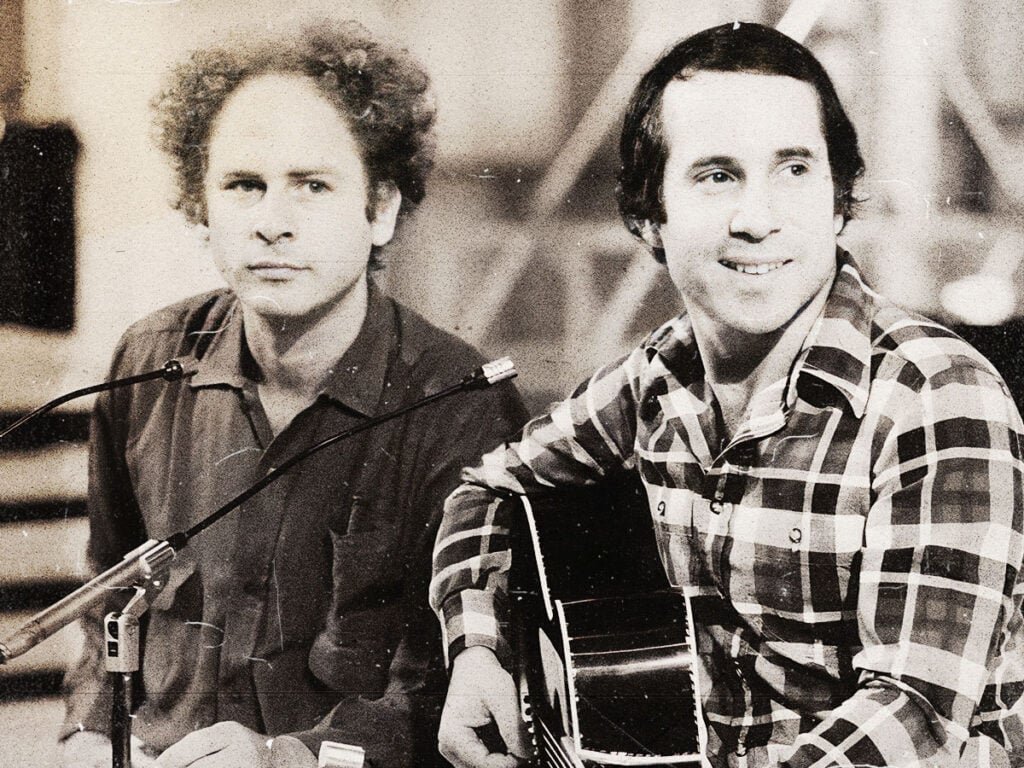
(Credits: Far Out / Sony Music Entertainment)
Sun 1 June 2025 19:40, UK
Simon and Garfunkel were one of the most iconic acts of the 1960s.
Consisting of songwriter Paul Simon and singer Art Garfunkel, the duo led the folk-rock wave of the decade. Their carefully crafted songs turned them into one of the best-selling groups of the time, earning worldwide number-one hits with ‘The Sound of Silence’, ‘Mrs. Robinson’, ‘The Boxer’ and their swan song ‘Bridge over Troubled Water’.
The pair met in elementary school in Queens, New York, in 1953. It was there that they began a highly productive partnership, writing together under the moniker Tom and Jerry – not after the cartoon, but from Garfunkel’s alias “Tom Graph”, reflecting his love of maths, and Simon’s choice, “Jerry Landis”, taken from a girl he dated.
Success followed quickly. At 15, they signed to Sid Prosen’s Big Records after he overheard them recording ‘Hey Schoolgirl’ in a Manhattan studio. The $25 recording—around $244 today—became a hit after Prosen paid DJ Alan Freed $200 to play it on air. The single gained rotation on major radio stations, selling over 100,000 copies and landing them on American Bandstand alongside Jerry Lee Lewis.
Early fame and the beginnings of friction
The duo earned around $4,000—close to $38,000 in today’s money—though it amounted to just two per cent each in royalties, with the rest going to Prosen. Their next singles, ‘Our Song’ and ‘That’s My Story’, failed to chart. After graduating in 1958, both pursued higher education. Simon studied English at Queens College, and Garfunkel studied architecture before switching to art history at Columbia.
Still under contract, Simon released a solo track under the name ‘True Taylor’, which Garfunkel saw as a betrayal. It sparked long-running tensions. Garfunkel began to feel like a backing singer to Simon’s operation — a dynamic that would continue to haunt their relationship.
By late 1963, they reunited as Kane and Garr, playing open mic nights at Gerde’s Folk City in Greenwich Village. Performing ‘Sparrow’, ‘He Was My Brother’ and ‘The Sound of Silence’, they caught the attention of Columbia producer Tom Wilson, who had also guided Bob Dylan’s shift into electric folk. Simon convinced Wilson not to give ‘He Was My Brother’ to another act, and the duo were signed to Columbia under their real names.
Their debut, Wednesday Morning, 3AM. was released in 1964 to little fanfare, and they disbanded once more. Simon moved to England, playing with folk contemporaries like Bert Jansch and Sandy Denny.
A smash hit and the seeds of their split
Out of nowhere, a remixed electric version of ‘The Sound of Silence’ became a hit in the US. They reunited to release Sounds of Silence in 1966 and toured college campuses. That same year, their third album Parsley, Sage, Rosemary and Thyme saw them regain creative control. Their music featured heavily in The Graduate, pushing them further into the cultural spotlight.
In 1968, Bookends went to number one, led by the hit ‘Mrs. Robinson’, which became synonymous with The Graduate. Their final studio album, Bridge over Troubled Water (1970), was their biggest commercial success, but behind the scenes, their relationship was fractured beyond repair.
Simon launched a hugely successful solo career, peaking with 1986’s Graceland. Garfunkel also went solo, scoring a hit with ‘All I Know’ and appearing in films like Catch-22, Carnal Knowledge, and Bad Timing.
They would reunite several times, most notably for 1981’s Concert in Central Park, which drew over 500,000 people. Their legacy was cemented with ten Grammy Awards and induction into the Rock and Roll Hall of Fame in 1990. Still, the question remains: why did they split, and why for good?
Mort Lewis, their manager, once said: “They both envied the other’s place in the team.” Simon believed the spotlight favoured Garfunkel, while Garfunkel knew Simon wrote the songs and held the power. Their rift dates back to the Tom and Jerry days. Garfunkel recalled in his 2017 memoir: “The friendship was shattered for life… I never forget, and I never really forgive.”
He added, “Paul won the writer’s royalties. I got the girls.”
Simon battled self-doubt and depression, once saying: “Most people look at me and wonder, ‘How could that guy be depressed?’… All I’ve been looking at is this thin slice of pie that has got the bad news in it.”
Garfunkel noticed this vulnerability. In the 2017 biography Paul Simon: The Life, Simon said: “I remember during a photo session Artie said, ‘No matter what happens, I’ll always be taller than you.’ Did that hurt? I guess it hurt enough for me to remember 60 years later.”
There were plans for a new album after the Central Park concert, but creative and personal differences stalled it. “We didn’t think the same musically,” Simon said. “We had grown apart.”
Nichols’ casting of Garfunkel in Catch-22 — and not Simon, whose part was cut — added further strain. Garfunkel then signed on for Carnal Knowledge, which took him away for six months, leaving Simon to write their next album alone. Simon said: “He knew how I’d feel, but he did it anyway.”
Simon recalled thinking: “If Artie had become a big movie star he would have left. Instead of just being the guy who sang Paul Simon songs, he could be Art Garfunkel.” That realisation solidified his resolve: “I didn’t need Artie.”
In July 1970, just after Bridge Over Troubled Water, they parted ways in a car park. “We were finished,” Simon said. “With Artie, there was no reason to talk about it.”
They reunited in 1993 for shows in New York, but criticism revived old wounds. One review claimed Garfunkel was just part of Simon’s supporting cast. Simon’s manager said: “If there had been a knife on the table, one of them would have used it.”
In 2010, a reunion tour was scrapped after Simon said Garfunkel’s voice had deteriorated. Garfunkel’s denial infuriated him. “I was tired of all the drama,” Simon said. “I didn’t feel I could trust him anymore.”
Garfunkel had the last word in 2018, telling The Telegraph he thought Simon was an “idiot” for breaking up the band.
Whatever way you look at it, the story of Simon and Garfunkel is steeped in rivalry, ego, and lasting bitterness. Since 1970, every reunion has ended in fallout. And while their music remains timeless, their partnership serves as one of pop’s most poignant cautionary tales.
Related Topics
Subscribe To The Far Out Newsletter

